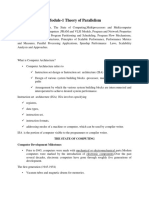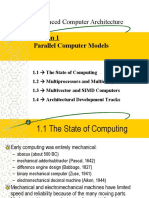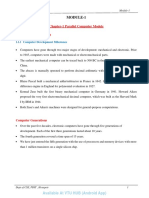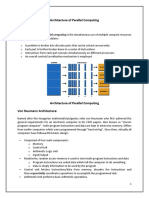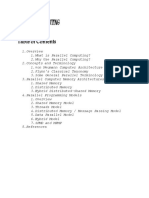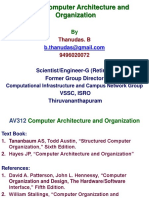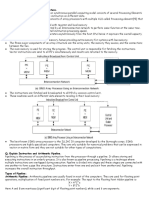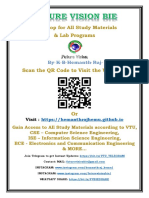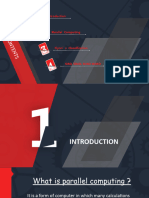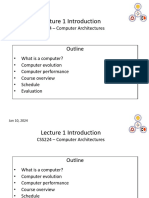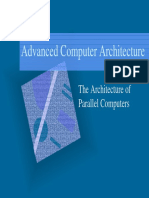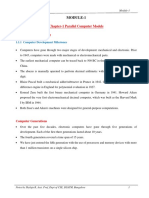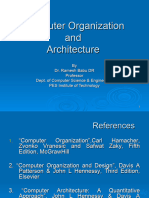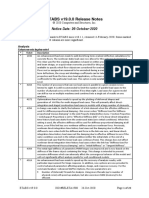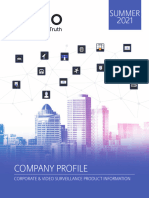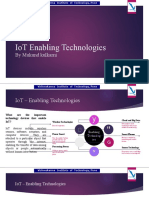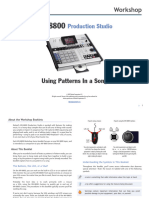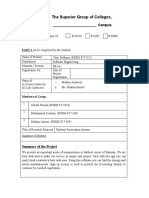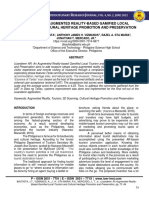0% found this document useful (0 votes)
43 views61 pagesParallel Scalable Models
The document discusses the evolution of computer architecture from early mechanical computers to modern electronic computers. It covers topics like computer generations, components of modern computers, parallelism techniques, and classifications of computer architectures.
Uploaded by
Senthil Ganesh RCopyright
© © All Rights Reserved
We take content rights seriously. If you suspect this is your content, claim it here.
Available Formats
Download as PPTX, PDF, TXT or read online on Scribd
0% found this document useful (0 votes)
43 views61 pagesParallel Scalable Models
The document discusses the evolution of computer architecture from early mechanical computers to modern electronic computers. It covers topics like computer generations, components of modern computers, parallelism techniques, and classifications of computer architectures.
Uploaded by
Senthil Ganesh RCopyright
© © All Rights Reserved
We take content rights seriously. If you suspect this is your content, claim it here.
Available Formats
Download as PPTX, PDF, TXT or read online on Scribd
/ 61

